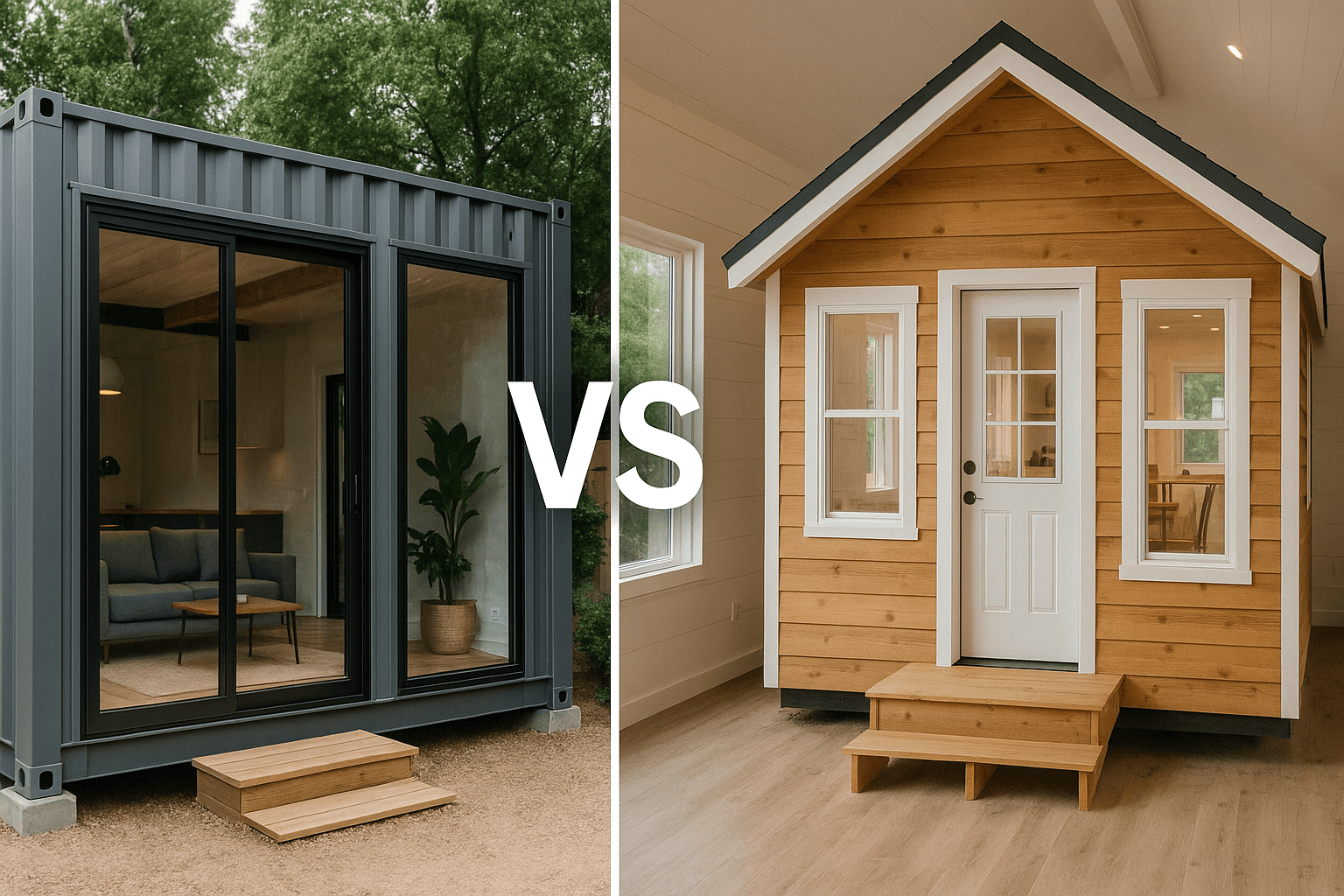Shipping container homes gained popularity in the 2010s as a sustainable housing solution using recycled materials. The appeal is strong. Containers are everywhere, relatively cheap to buy, and provide instant structure. They look modern and industrial. Many people see them as a shortcut to affordable housing.
However, converting containers into comfortable homes requires extensive work. Metal containers were designed to ship goods, not house people. Making them livable means solving insulation challenges, cutting structural steel carefully, treating rust, and adding windows and doors. The total work often costs as much as building a tiny house from scratch.
This comparison looks past the hype to examine real costs, construction challenges, and whether containers actually save money compared to traditional tiny house construction. Both options work, but they suit different goals and builder skill sets.
